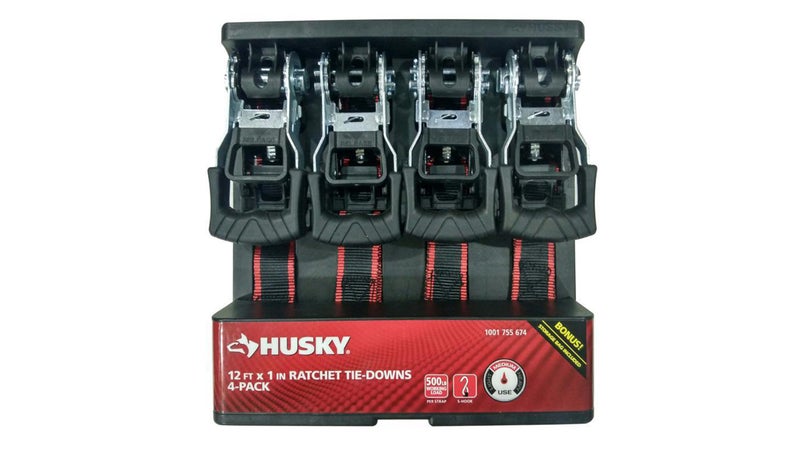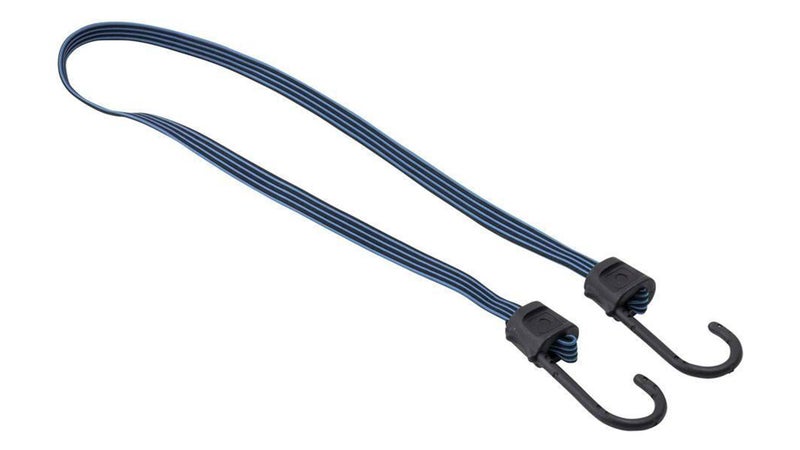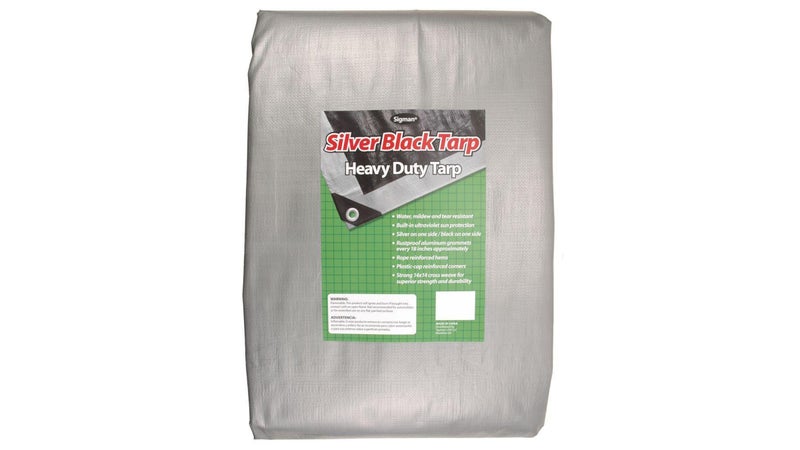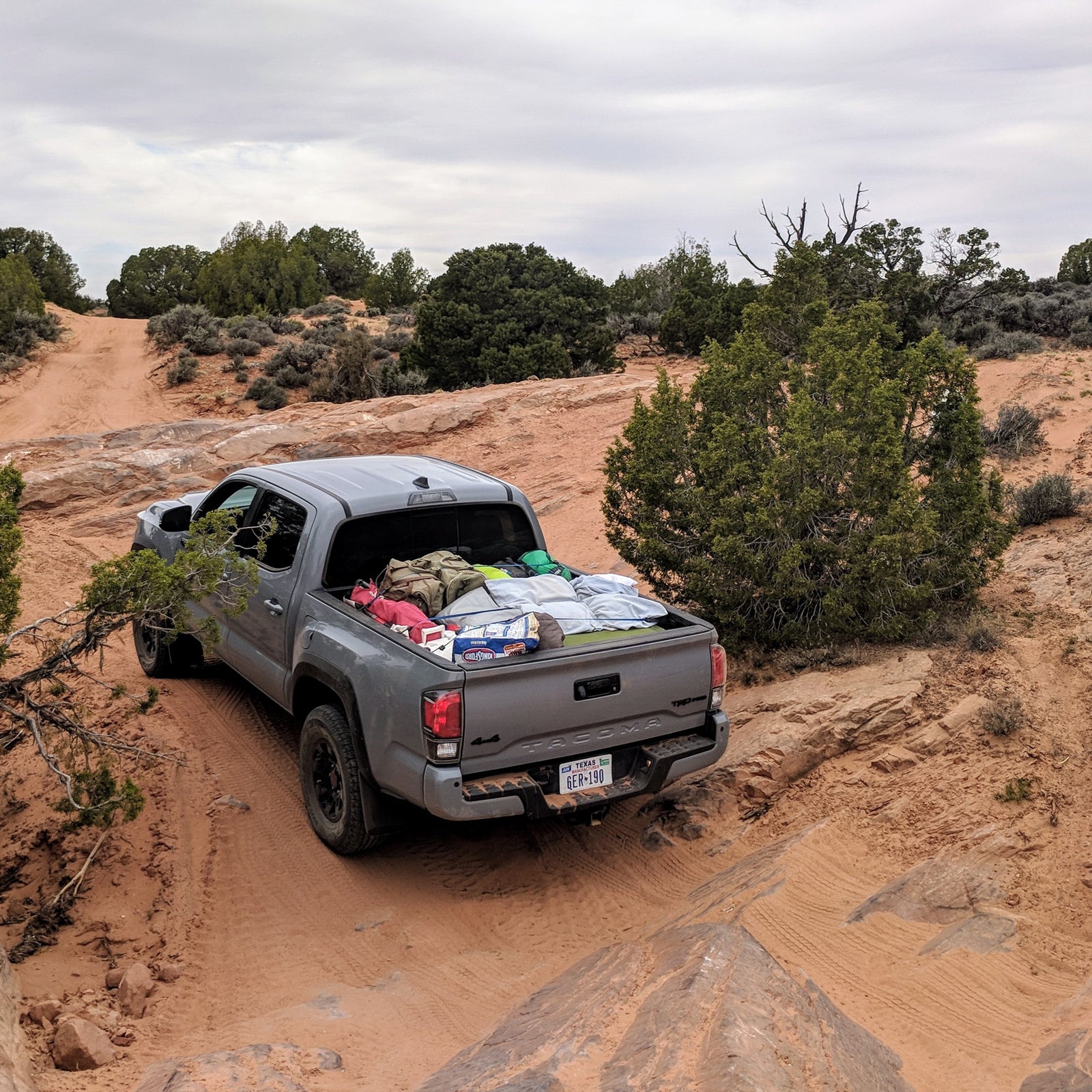Pickup trucks are great for camping, given their ample cargo space. That said, packing one requires some unique considerations as, unlike an SUV or a wagon, the cargo area is open to the elements. Applying a thought-out method to your madness can pay big dividends down the road.
What You鈥檒l Need
Before loading up your truck to head into the hills for the weekend, you鈥檒l want to pick up a few basic items at your local hardware store. It鈥檚 pretty much a guarantee that anything not strapped down is going to shift around in the back of your truck once you鈥檙e on the road, especially when some of those roads are unpaved. Properly securing your gear requires a combination of ratchet straps, bungee cords, and a tarp. Conveniently, all of this stuff can be found at Home Depot for under $50.

Ratchet straps are your first line of defense. Since they don鈥檛 stretch, they鈥檙e great for securing large, heavy items, like coolers and gear trunks. For the past few years, I鈥檝e used these , which have yet to let me down. And at $12 for four of them, you really can鈥檛 beat the price.

Bungee cords come next. Think of them聽as those few extra pieces of Scotch tape you might throw on a package before you drop it in the mail, securing smaller gear like tents, sleeping bags, and camp chairs for peace of mind as you鈥檙e cruising down the highway. I keep about six聽 ($3) in my truck at all times.
Just about any pickup comes with built-in tie-down points in the bed, to which you can attach your ratchet straps and bungee cords. Toyota鈥檚 Tacoma even comes standard with a deck rail system鈥攖wo slidable, inward-facing cleats mounted to a track running along the upper rim of the bed.
Finally, if you don鈥檛 have a cap over your pickup, you鈥檒l want to cover everything with a tarp before you set off on your journey. More than anything, the humble tarp keeps exhaust fumes, road debris, dust, and rain off your expensive gear. But it also acts as a fail-safe should any items jostle loose on the drive. The bonus is the element of privacy a tarp affords; no need to be flaunting that $200 Marmot sleeping bag around prying eyes at the gas station.

Additionally,聽a tarp can double as your tent footprint when it comes time to set up camp. This ($23) does the trick.
The Steps
Once you鈥檝e got these items on hand, start by loading big, solid things into the pickup bed. This might include聽bins, coolers, a water jug, and any other clunky, hard items. Arrange them as densely as possible, and lock them firmly in place with two ratchet straps over the top. Next, take any soft, plush gear, like sleeping bags, duffle bags, and pillows, and wedge items聽between the big stuff to keep it all from rattling around. Finally, awkwardly shaped items like camp chairs, propane tanks, and blocks of firewood can be stashed against either side of the bed around the wheel wells.
After everything is in, secure the load further with any remaining ratchet straps, making sure that the ends are fixed to the mounting points before tightening. Then use the bungee cords to apply pressure to smaller items that aren鈥檛 held in place by the ratchet straps.聽There are really endless ways to do this; just be careful that each individual item not secured by a ratchet strap is held by a bungee cord, and that both ends of the bungee are safely secured to a tie-down point. Fold your tarp so that it fits over the bed, then secure your remaining bungee cords widthwise over the top of it. Remember that you鈥檒l likely be traveling at highway speeds for most of the drive, so make sure the tarp is tucked in firmly at the corners and edges, and that those bungee cords are tight, to avoid a parachuting effect on the freeway.
And one final tip鈥攎ake sure that cooler is in an accessible spot. The best campgrounds are the ones that are hard to get to, so by the time you arrive, chances are you鈥檒l have earned a beverage.


